A Modern Log House Challenges Stone Houses with Its Sustainability
The trends in construction have changed significantly in recent years. Increasingly, builders and architects aim to combine modern design with the principles of sustainable development. Both log houses and stone houses can provide impressive and durable solutions, but log houses bring a unique ecological and healthy dimension to construction.
A Polar Life Haus log house meets the requirements of modern architecture
Polar Life Haus has introduced innovative log house solutions that meet the requirements of modern architecture. Non-settling log structures, large window surfaces, and hybrid constructions open up new possibilities that were previously associated mainly with stone houses. Additionally, Polar Life Haus offers the option of building without trims, allowing interior wall and window surfaces to remain clean and modern without traditional moldings. This finishing solution emphasizes minimalist design and makes spaces even more harmonious.
The design of Polar Life Haus also emphasizes other stylish details, such as custom window solutions, integrated lighting systems, and refined material choices that combine aesthetics with practicality. Thanks to these unique solutions, a log house can be as sleekly modern as a stone house—but in a more ecological and healthier way.
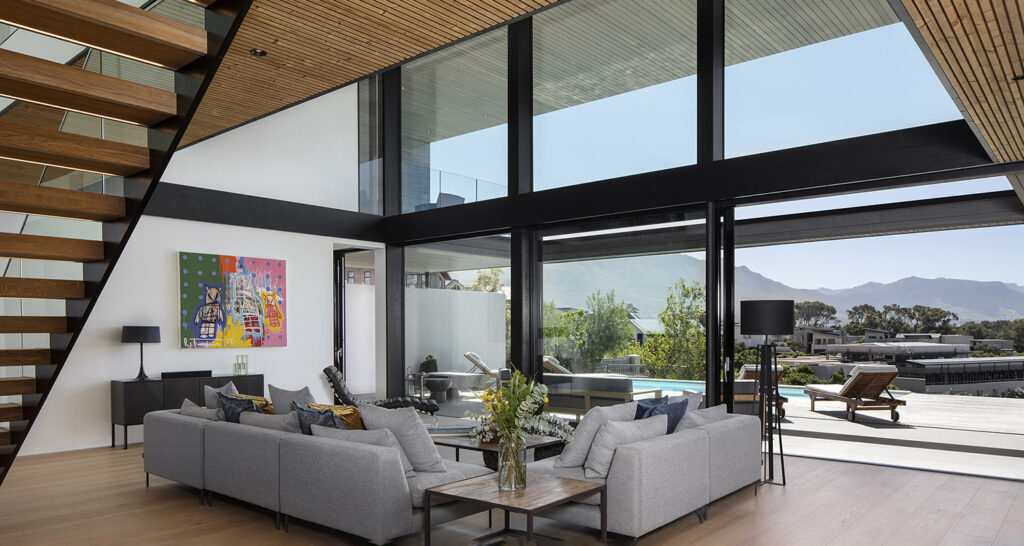
The Architectural Possibilities of Modern Log Houses Are Nearly Unlimited
The design possibilities of log houses have evolved immensely. Polar Life Haus’ non-settling log technology enables versatile architecture without the restrictions of traditional log structures. Non-settling construction means that large windows and modern lines can be achieved without concerns about structural changes over time.
Polar Life Haus’ HTWS windows are an excellent example of innovative solutions that support modern log construction. Designed specifically for non-settling log structures, these windows combine technical functionality with high-end design. They allow for large, seamless glass surfaces that open up views to the surrounding nature and bring abundant natural light into interior spaces.
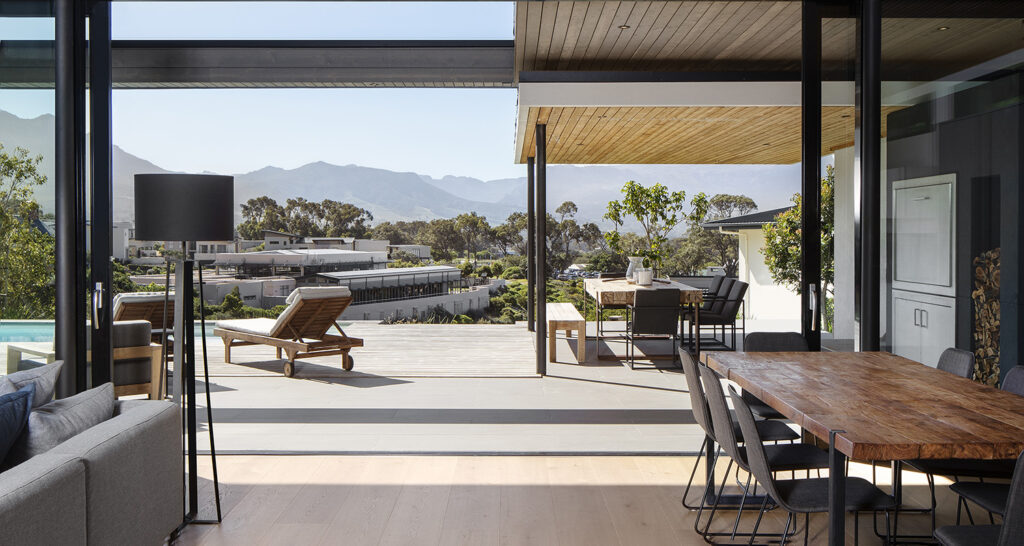
Polar Life Haus’ state-of-the-art wood processing technology opens new dimensions in log construction. This advanced technology enables the realization of curved shapes and other sophisticated details not typically seen in traditional log buildings. Thanks to these unique solutions, the design language of a log house can be bold and personal, meeting the high demands of modern architecture—previously a hallmark of stone houses.
Hybrid structures, which combine logs with materials such as steel, add flexibility to log construction. This enables solutions commonly associated with stone houses: large open spaces, minimalist design, and almost seamless transitions between indoor and outdoor areas.
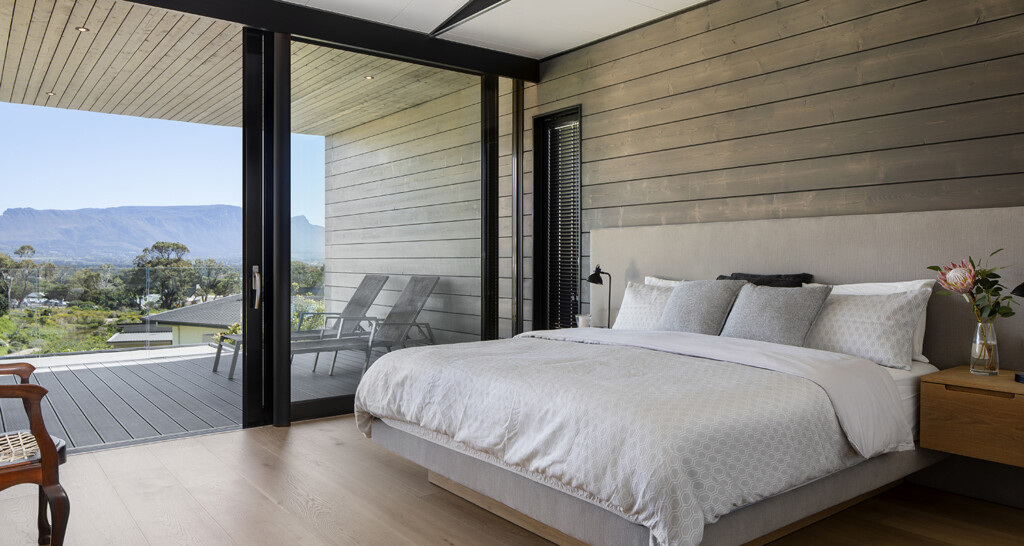
Significant Differences in Sustainability Between Log Houses and Stone Houses
The sustainability of building materials is now one of the most important criteria for both private homebuilders and architects. Both log houses and stone houses can offer long-lasting and durable solutions, but their environmental impacts differ significantly.
Stone houses are often built using materials such as concrete, brick, and steel, which are highly energy-intensive to produce. For example, concrete production generates significant carbon dioxide emissions, with cement production being one of the world’s largest individual sources of emissions.
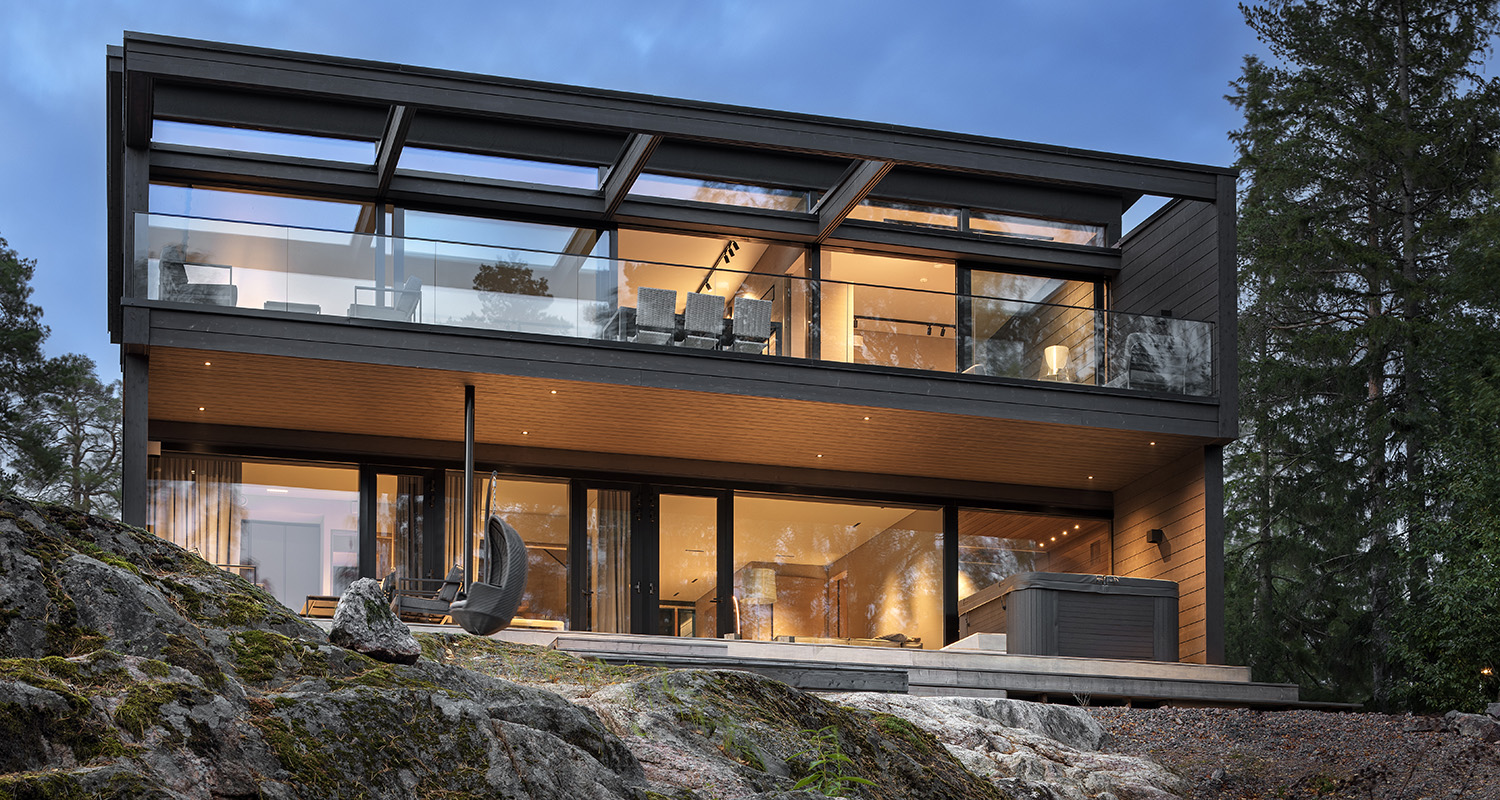
Wood as a More Environmentally Friendly Material
Log houses, on the other hand, are a significantly more environmentally friendly option since wood is a renewable natural resource that absorbs carbon dioxide throughout its growth. As a building material, wood continues to act as a carbon sink in the finished house. Additionally, the processing and production of logs require less energy than the production of stone materials.
The “carbon handprint” of a log house is significant. This means that construction has a positive impact on the environment because wood can store carbon and reduce the overall emissions of the construction sector. In contrast, stone houses often have a smaller carbon handprint due to the materials used.
Log Houses Offer Healthy and Safe Living Comfort
Indoor air quality is one of the most critical factors affecting living comfort. In this respect, log houses offer significant advantages over stone houses. Wood naturally regulates indoor air humidity, helping to maintain a pleasant and healthy environment year-round. This can reduce the risk of respiratory issues and allergies.
Stone houses, on the other hand, may require more technical solutions, such as mechanical ventilation and moisture control, to maintain optimal indoor air. While these systems can be effective, their use increases the home’s energy consumption, diminishing the ecological profile of stone houses.
The natural properties of log houses also provide a pleasant acoustic environment and a cozy atmosphere that is difficult to achieve with stone materials. This makes log houses a holistically comfortable and healthy choice.
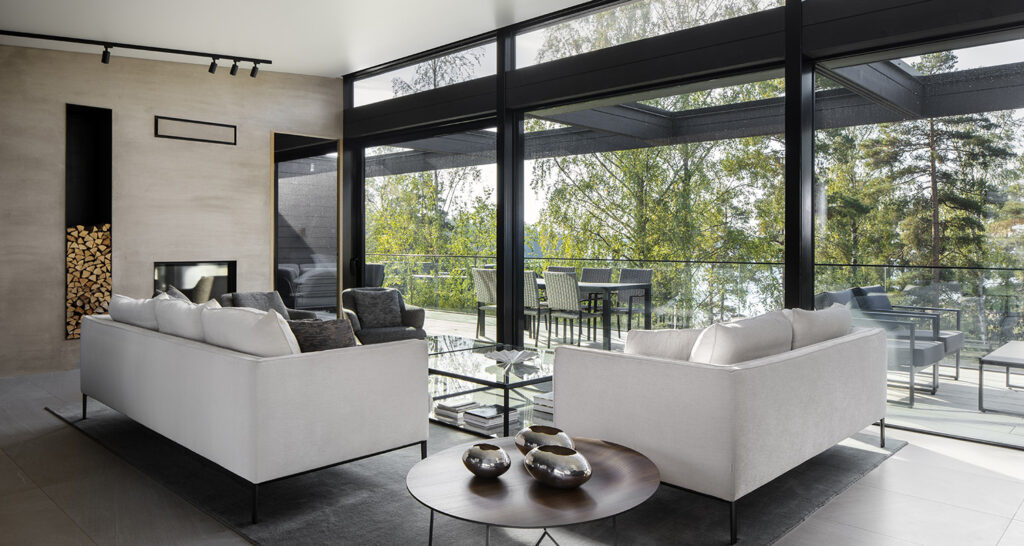
The Lifecycle and Durability of Buildings
Both log houses and stone houses are long-lasting solutions that can provide living comfort for generations. However, their environmental impacts over their lifecycle differ significantly, particularly regarding the origin, production, and reuse of materials.
Wood as a Renewable and Reusable Resource
The materials in log houses, such as wood, are natural and renewable. When a log house reaches the end of its lifespan, its materials can be recycled, used for energy production through combustion, or repurposed for new buildings or furniture. This circular approach makes log houses an environmentally friendly choice, even in the long term. Additionally, wood continues to store carbon throughout its lifecycle, significantly reducing the carbon footprint of the building.
The lifecycle of stone houses can also be long, but the handling of their materials poses significant challenges. Concrete, steel, and brick are heavy materials whose production consumes vast amounts of energy and natural resources. Furthermore, their demolition and recycling are often energy-intensive processes. While concrete can be crushed and reused, such as for filler material, this requires far more resources than reusing wood. Recycling steel and bricks involves heavy transport and high temperatures, increasing their carbon footprint.
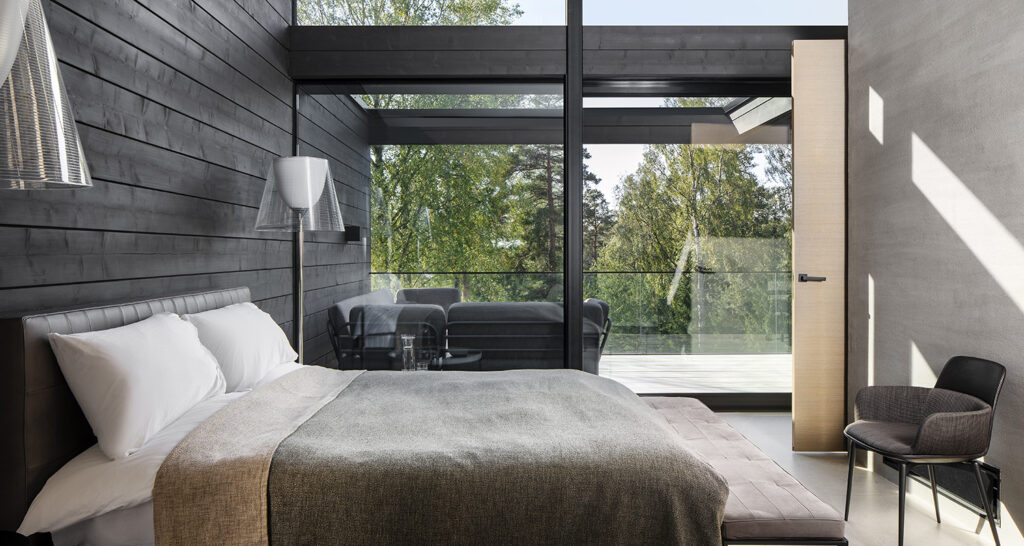
Wood as an Energy-Efficient Material
The sustainability of log houses extends beyond the reuse of materials. Wood naturally regulates moisture and temperature, which can reduce energy consumption throughout the building’s life. As a result, log houses are not only long-lasting but also energy-efficient in everyday living.
Stone houses, in contrast, may require more technical solutions to achieve energy efficiency, such as insulation materials and mechanical systems, which increase overall costs and energy use. While stone houses can offer excellent thermal insulation properties when properly designed, their overall environmental impact is often greater compared to log houses.
In summary, log houses represent a sustainable and ecological approach to lifecycle thinking in construction. The recyclability of materials, smaller carbon footprint, and energy efficiency make them an attractive option for those who value sustainability in construction.
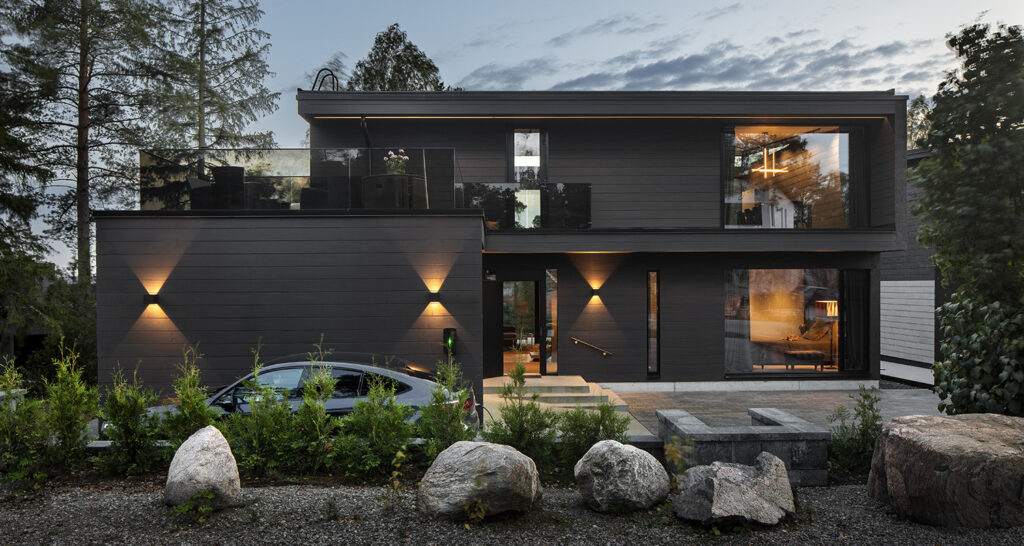
Summary – An Ecological and Healthy Choice for Modern Construction
Both log houses and stone houses offer opportunities to create impressive and durable buildings, but their differences are highlighted in terms of sustainability and health. A Polar Life Haus log house combines modern design, closeness to nature, and sustainability in a way that makes it an excellent choice for contemporary living.
Polar Life Haus’ innovative solutions, such as non-settling logs and hybrid structures, enable unique architecture without compromise. At the same time, log houses promote environmental well-being and provide a healthy living environment for the entire family.
If you are looking for a modern, ecological, and healthy home, a Polar Life Haus log house is a solution that meets all these requirements—and more.